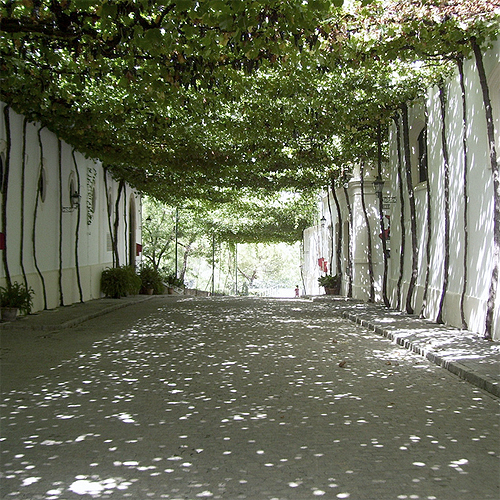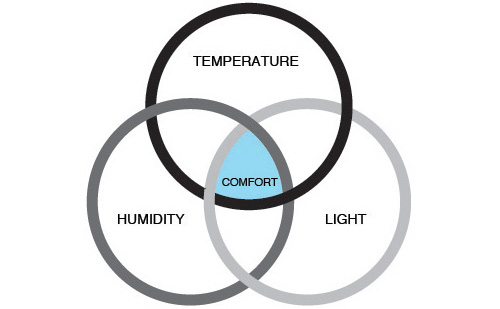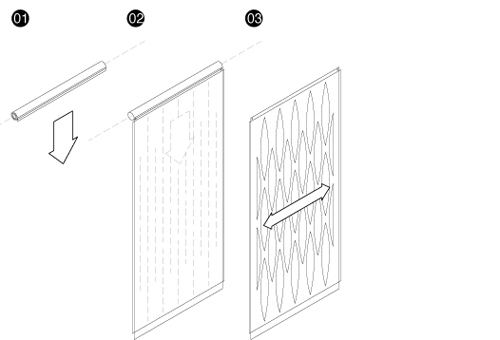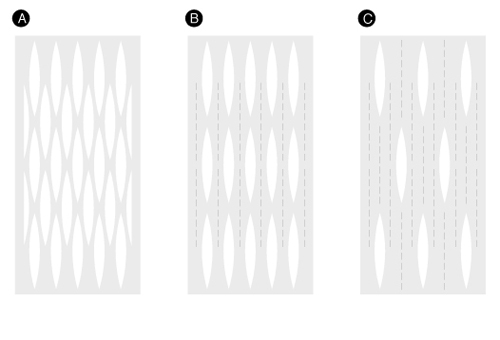applications and
implications
aplicacions
i implicacions
assignment
plan and document a final project that integrates the range of units covered

what will it do?
Mediterranean skin. Smart tissue window screen.
The project is a textile screen that controls different inputs like temperature,
humidity and solar radiation to generate comfort.
Depending the wheatear, the season and the orientation of the building,
every window needs specific conditions of radiation or ventilation. The
Mediterranean skin has to be able to adapt the holes to help the building
to save energy.
Intelligent
Infrastructure for Energy Efficiency
Neil Gershenfeld, 1 Stephen Samouhos ,1,2 Bruce Nordman 3
"Buildings use 40% of the primary energy supplied in the United States,
and more than 70% of all generated electricity (1), primarily for heating,
cooling, and lighting. About 20% of the energy used by buildings can potentially
be saved by correcting faults, including malfunctions and unnecessary
operation (2). Initial deployments of advanced control systems currently
in development suggest that they can save an additional 10 to 20% (3).
The energy efficiency resource recoverable through such improved building
controls and fault detection corresponds to the output from hundreds of
power plants, equivalent to more than one-third of the coal-fi red power
production in the United States (1). Realizing these substantial savings
will require introducing intelligence into the infrastructure of buildings,
to distribute the optimization of their operation and detection of their
faults. Intelligent infrastructure extends "smart grid" initiatives that
seek to save energy by allowing utilities to manage loads, such as turning
off air conditioners during peak demand (4). However, a grid cannot be
smart if it is connected to dumb devices."
www.sciencemag.org
01. the project



who's done what beforehand?
some links related with my final project:
Flapping origami crane
http://fab.cba.mit.edu/classes/MIT/863.10/people/jie.qi/jieweek10.html
Urban sensor kit
http://wiki.fablabbcn.org/index.php?title=Urban_sensor_kit&oldid=7232
How to get what you want? http://www.kobakant.at/DIY/?p=2884
Smart Textiles Design Lab http://www.stdl.se/
http://makingfurnitureinteractive.wordpress.com/2007/10/11/muscle-wire/
what materials and components will be required?
Polyamide synthetic tissue. Different tissue samples and a large
tissue screen (approximately window size)
Nitinol wire (nickel-titanium allowing). For the prototype I will
use Flexinol« from Dynalloy. It is a trade name for shape memory alloy
actuator wires. It is made of nickel-titanium allowing these small diameter
wires to contract like muscles when electrically driven. If used within
the guidelines then obtaining repeatable motion from the wire for tens
of millions of cycles is reasonable.
I've sold to different sizes:
One meter of HT (Transition Temperature 90║) / 150microns diameter
One meter of LT (Transition Temperature 70║) / 300microns diameter
Solar Module. solar flexible panel that, through the module and
a battery, provides 5V to the sensor boards and the Flexinol« wire.
Humidity sensor. I will use the step sensor we tested in input
devices class.
Solar radiation sensor. I will use the light sensor we tested in
input devices class.
Temperature sensor. I will use the temperature sensor in input
devices class.
Mosfet circuit. I will try some example I've found in the acdemy.
where will they come from?
I had to buy the memory alloy actuator wire trough the website
http://todoelectronica.com/
I've got all the tissues from a local dealer who is working with polyamide
synthetic fabric.
The electronics and the solar module, I have to check, but I guess we
will have already in the lab.
how much will it cost?
The Flexinol« wire costs 10 Euros one meter.
what parts and systems will be made?
I will try to do all the boards including the solar module to get power
supply.
what processes will be used?
what tasks need to be completed?
what questions need to be answered?
what is the schedule?
1. I will have to get the
best pattern to cut by laser the tissue screen.
2. First of all I have to do some test with
the different tissues I have with the two different types of wire I've
bought. The power supply is going to be a 5V battery for the moment.
3. Inputs. Fix and test every sensor I need.
http://academy.cba.mit.edu/classes/input_devices/index.html
4. Translate the inputs coming from the sensors
to an interface, probably made with processing. http://processing.org/
5. Outputs. Give an output data to the MOSFET
circuit that will react with the screen.
6. Incorporate and test the solar module
to give power supply to the set. 7. Now I will be ready to make a 1:1
prototype. I will have to assemble all the components and the power supply
(solar module) to the tensor bar at the lower end of the screen.
how will it be evaluated?
projects can be separate or joint, but need to show individual mastery of all of the skills where possible, you should make rather than buy the parts of your project